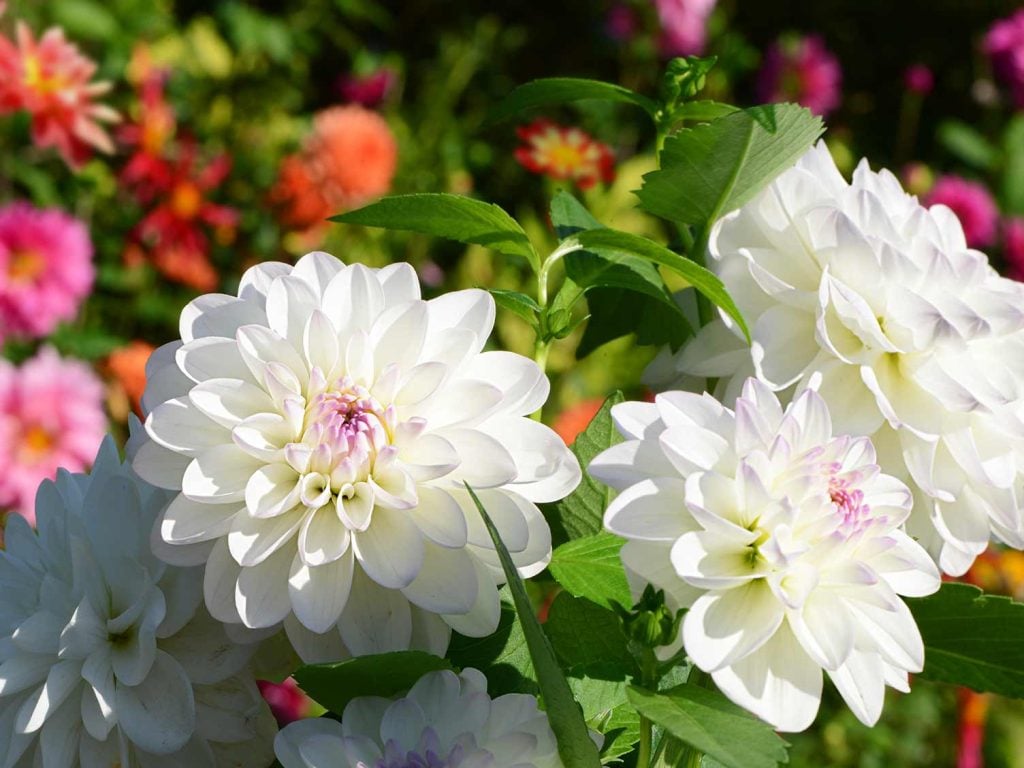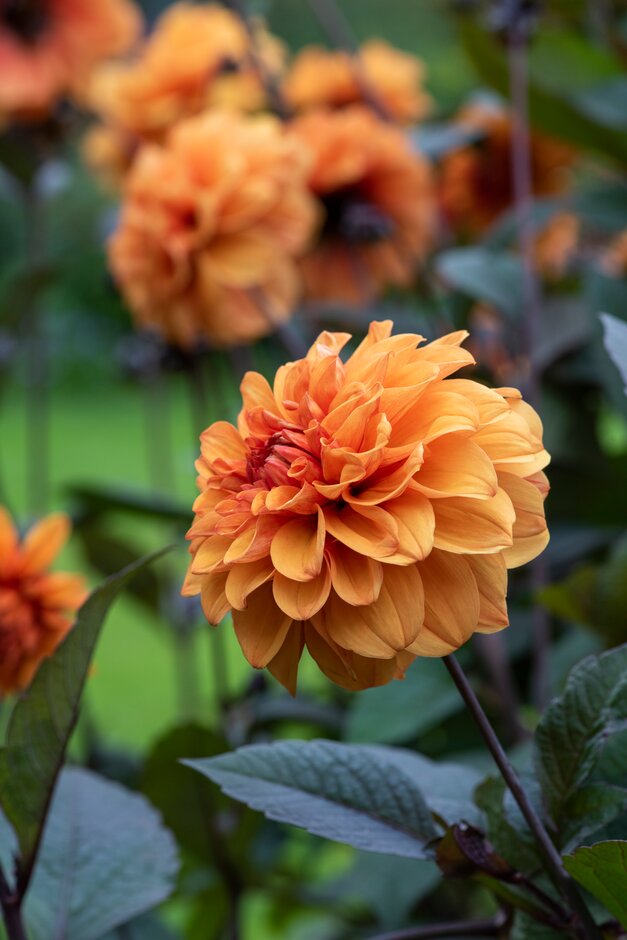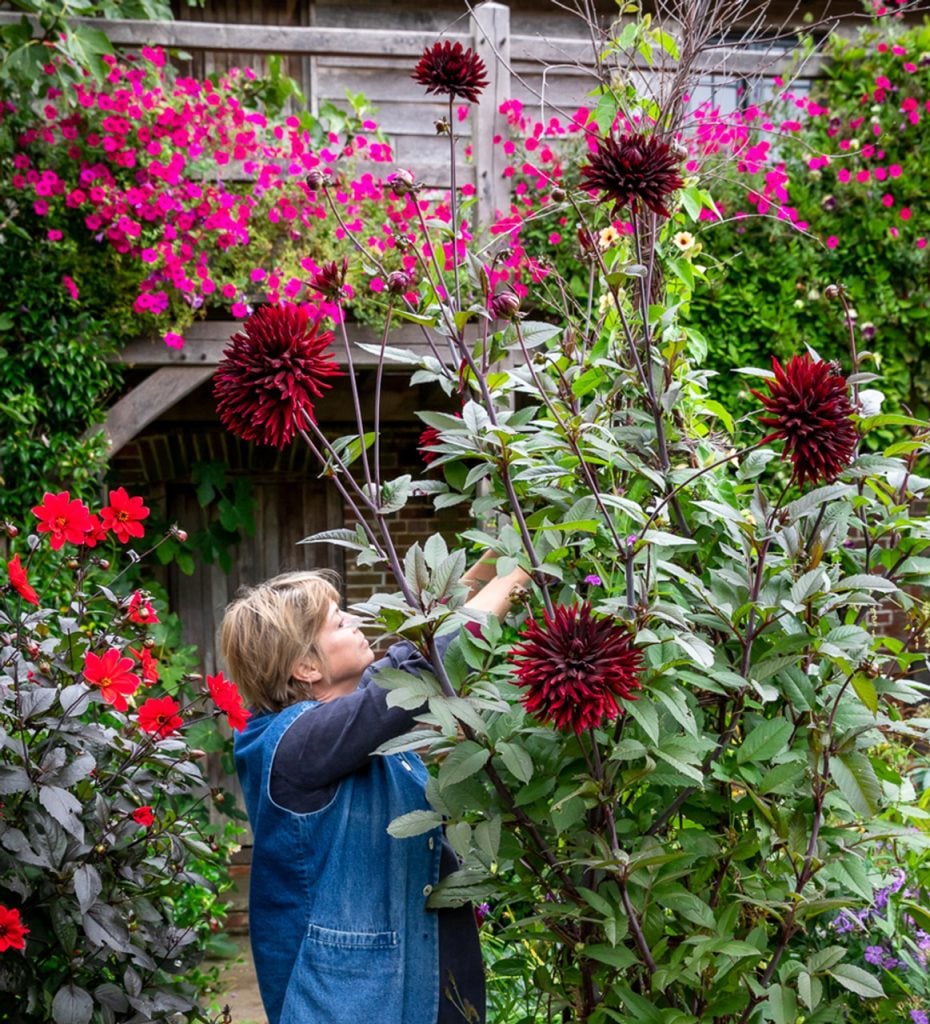Table of Contents
Dahlias, the stunning and adaptable blossoms that come in a variety of forms, sizes, and colours, are a beloved choice for gardeners of all levels. These plants, whether grown in herbaceous borders, mixed beds or containers, can add a pop of colour and variety to any yard.
Dahlias are a necessary component of every garden since they can grow in various soils and environments, and they are simple to care for in the UK climate. This article offers a thorough tutorial on dahlia care UK, from planning to upkeep, so that you can create a stunning floral display in your backyard. In order to learn how to develop these stunning blooms, let’s explore the world of dahlias.
Key Points to Remember when Growing Up Dahlia

- Size, flower and leaf colour, pollinator appropriateness, and other aspects should all be considered when selecting dahlias for your garden.
- Dahlias are available in various sizes, from little bedding varieties to tall showstoppers. When selecting a size, take into account the location where you intend to plant them.
- When choosing dahlias, flower colour is crucial, but remember to consider the leaf’s colour. Varieties with darker leaves can create a striking contrast with flowers that are lighter in colour.
- Single-flowered dahlias are the ideal choice for luring pollinators to your garden. They are pollinator-friendly. Look for dahlias that have earned the RHS Plants for Pollinators designation.
- Big dinner-plate dahlias are magnificent and spectacular but could stand out too much in a border with other flowers. Think about planting them separately or combining them with plants that complement one other.
- Growing dahlias from seed is a budget-friendly approach to making a substantial and vibrant display in your yard. Although it could take a little more time and work, the results are worthwhile.
How to Grow Dahlias

Although these gorgeous blossoms are an excellent addition to any garden in the UK, it’s vital to remember that they are somewhat frost-hardy. Start planting tubers for your dahlias indoors in March, and wait to move them outside until all danger of frost has passed. Container gardening is a fantastic choice for people with less-than-perfect growth environments because winter lifting and storing is simple. Dahlias are beautiful all season long, and with some forethought and attention, you can make your UK garden genuinely shine.
Ready to Plant Your Dahlia Tubers and Add Color to Your Garden?
Before you start, knowing there’s a right and wrong way to plant these oddly shaped bulbs is essential. They may appear lifeless at first glance, but on taking a closer look, you’ll see the previous year’s stem, which should be facing upwards when planted. It’s easy to get confused, so be bold and move the tubers around until you spot the stem and can confidently put them into the ground or a container. With this simple tip, you’ll be on your way to growing stunning dahlias in no time.
Dahlia Care Uk

Watering: Dahlias must receive the right amount of water to flourish. Dahlias in the UK should be watered once a week with a big flood rather than a light mist during a drought. Dahlias in pots need to be watered more frequently, and during a drought, they should be watered daily. It’s crucial to prevent the soil from drying up entirely around dahlias because they are thirsty plants.
Fertilization: Dahlias must be fertilized properly to ensure strong growth and a profusion of flowers. Slow-release fertilizers are advised for dahlias grown in pots; after the first month, liquid comfrey or seaweed fertilizers should be applied every two weeks. This will guarantee that your dahlias have access to enough nutrients to grow healthy, vivid flowers.
Staking: Staking is another crucial component of Dahlia’s care in the UK. All dahlias must be cultivated next to a stake, and it’s vital to keep them to the stake every few weeks to keep them stable. Dahlias increase once they get going, and if they are not adequately staked, they risk breaking off at the base in wind or rain.
Deadheading: Dahlias require regular deadheading to encourage flowering. Deadheading is crucial if you don’t pluck every bloom for your house. Follow the blossom stem downward and cut above the first set of leaves you come across to deadhead. This will promote the development of additional blooms.
Propagating: Basal cuttings make it simple to propagate dahlias. Remove a few solid and healthy shoots around 7.5 cm (3 in) long in the spring with a clean, sharp knife and a small amount of the parent tuber. Pinch out the tip and remove everything but the top pair of leaves. Place each cutting just over the surface of the compost and space them apart so that they do not touch at the edge of a 1-litre pot filled with grit and compost. Place the compost somewhere bright but out of direct sunlight in a warm area or heated propagator after watering from above to settle it. After giving the pot a name, allow three to four weeks for the cuttings to develop roots. Once they form roots, carefully pot each cutting individually into a 7.5cm (3in) pot and grow them. With regular feeding and watering, your dahlias grown from cuttings will flower later in the same summer and form tubers.
Overwintering – Understanding how to prepare your dahlias for winter is crucial as the chilly weather approaches. If you have established plants, you may leave them in the ground or dig up the tubers and store them in a frost-free location for the winter when the foliage has naturally died back. If you started your dahlias from seed, you must also deal with tubers. The strongest tubers should be chosen for storage or left in the ground to see what surprises may arise the following year because these plants have a diverse genetic makeup. You may anticipate enjoying your dahlias again the next season if you take the proper precautions for overwintering them.
In the UK, caterpillars, slugs, and earwigs are common pests that dahlia plants must contend with. Your plants could suffer severe harm from these small predators, who can destroy the blossoms and eat through the foliage. But don’t worry! Dahlias can look their finest all season long with tender, loving care.
Placing slug and earwig traps is one of the simplest ways to safeguard your plants. Watching for these annoying creatures is crucial because they can be hidden in various crevices around your yard. You can use nematodes, tiny worms that feed on young and small slugs in the soil, or you can try surrounding your plants with crushed eggshells or copper wire.
These are easily applied and commonly accessible from garden centres.
Bamboo canes with an upside-down pot filled with wet straw, grass, or hay should be inserted throughout your patch as earwig deterrents. These are excellent hiding places for earwigs during the day, making them simple to catch and get rid of in the morning.
Remember, prevention is better than cure when it comes to pests. Regular feeding and watering will keep your dahlias healthy and able to fend off attacks from pests and other predators. So, in the UK, you may enjoy gorgeous blooms with some dahlia care all summer!
Summing Up!
In conclusion, meticulousness and care are necessary to perfect the art of dahlia growing. Your dahlias can flourish and add brilliant colours to your landscape with the proper watering, fertilizing, staking, and deadheading practices. When selecting your dahlias, keep in mind to take into consideration factors like size and leaf colour as well.
Also, remember to overwinter your plants to preserve their long-term health. These guidelines will help you succeed in dahlia care UK and take pleasure in the beauty of these magnificent flowers year after year.
Frequently Asked Questions
Can Dahlias Be Grown in Pots?
Dahlias can be grown in pots, but pick one at least 30 cm (12 inches) broad and 30 cm (12 inches) deep. Use a slow-release fertilizer and regular irrigation, or feed them every two weeks with liquid comfrey or seaweed fertilizer.
Dahlias Bloom for How Long?
Depending on where you live, dahlias typically bloom from mid-summer to the first frost, from late September to mid-November.
Are Bees Drawn to Dahlias?
Yes, dahlias provide bees and other pollinators with a lot of nectar. Additionally, they are excellent at luring beneficial insects like ladybirds and lacewings, which will aid with the pest control of your garden.
How Do I Prepare the Soil for Dahlias?
Dahlias prefer organically dense, well-draining soil. Compost, manure, or other organic material can be added to the soil before planting to increase the soil’s quality.

![How To Grow and Care for Dahlias [UK] How To Grow Dahlias](https://www.thearches.co.uk/wp-content/uploads/How-To-Grow-Dahlias-1.jpg)



